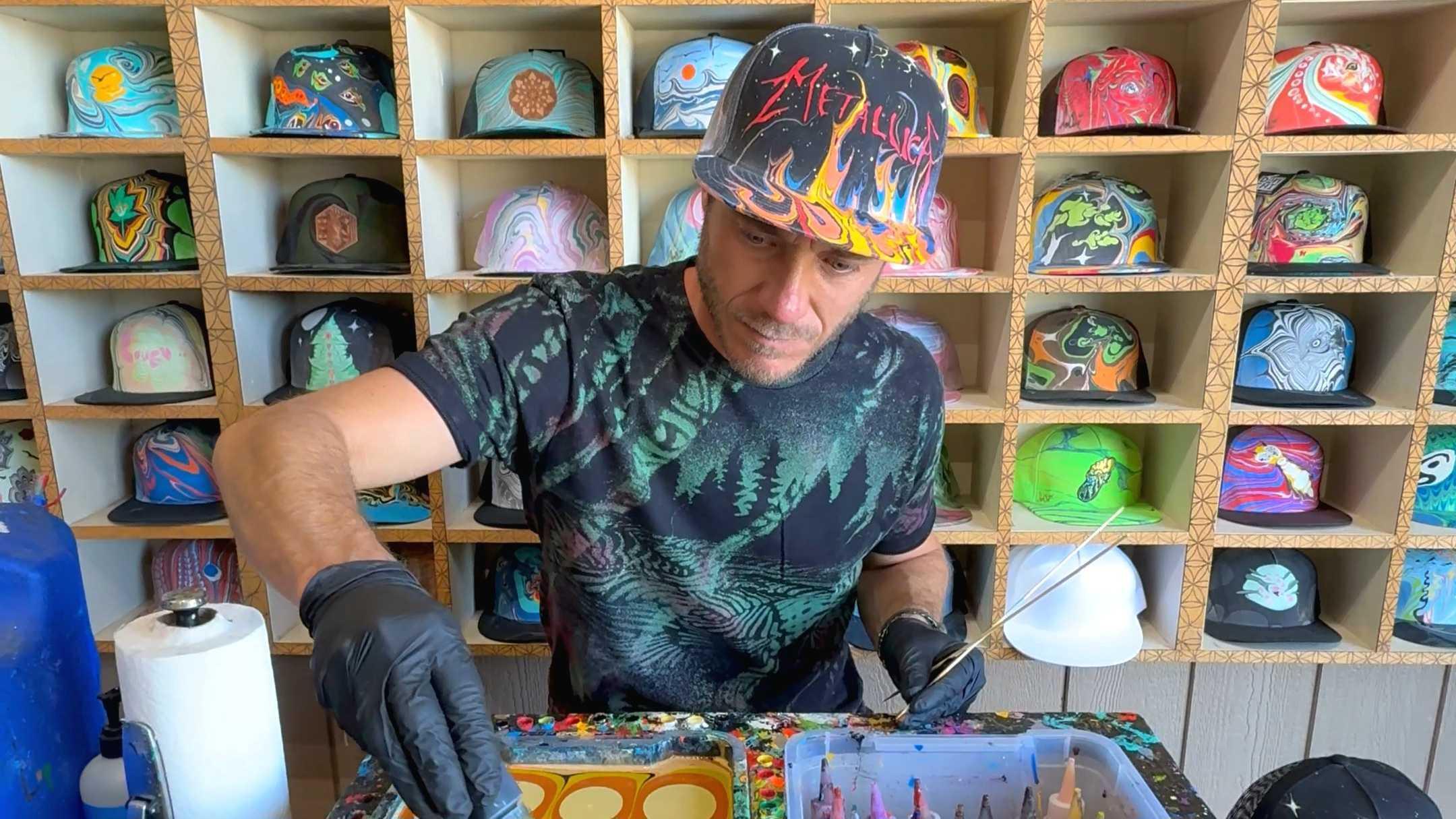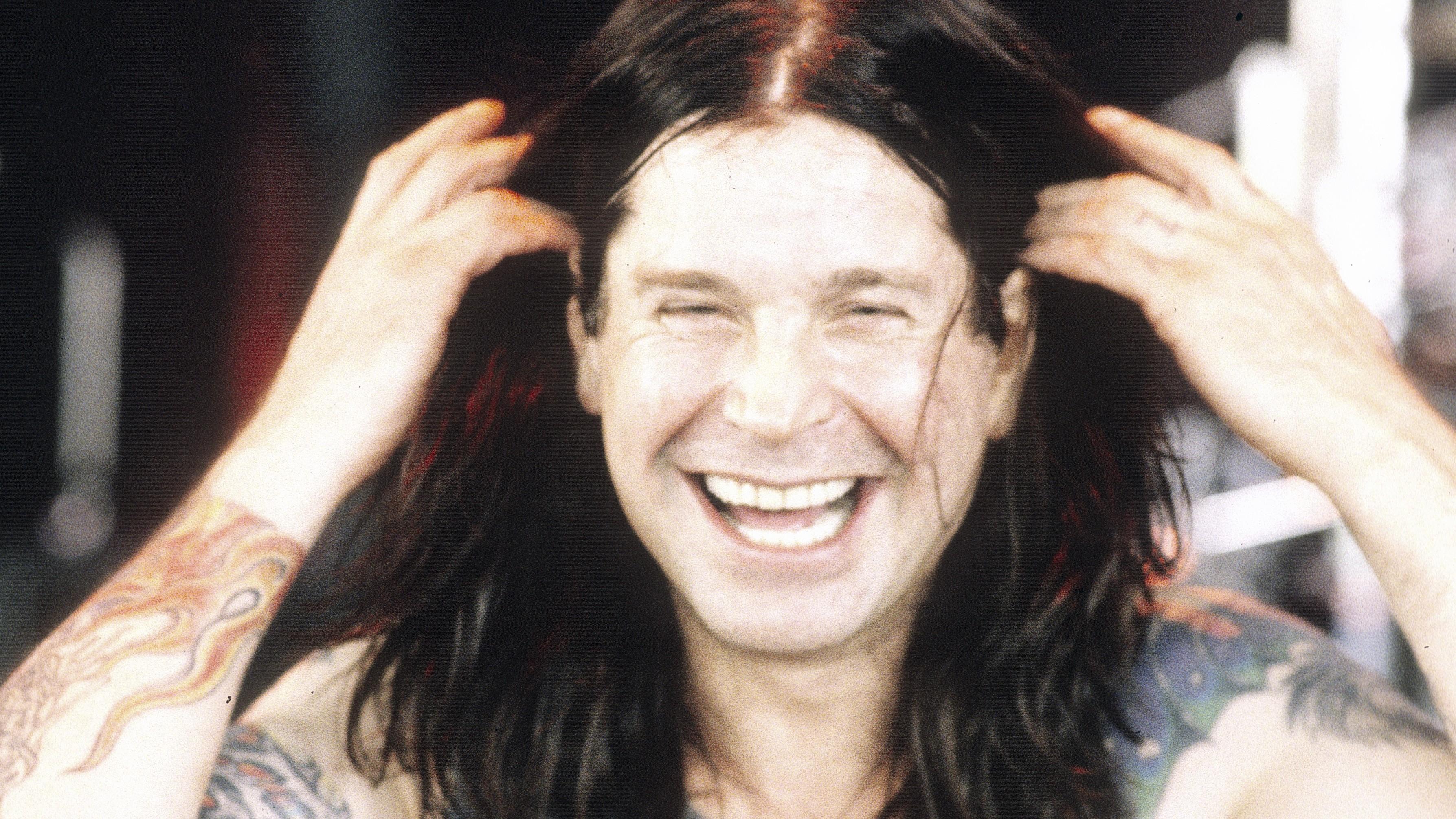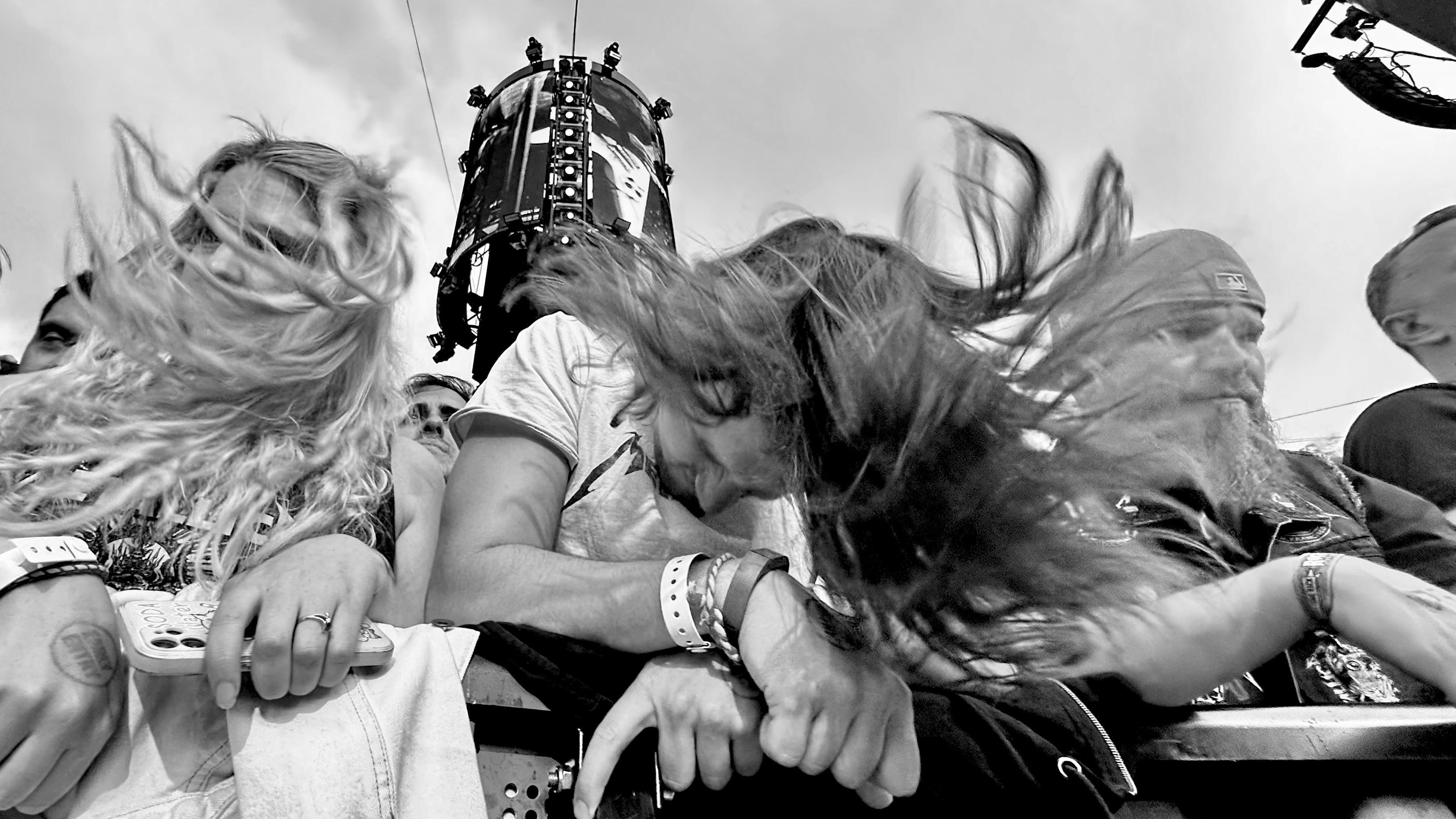
Renaissance Man
Dominic Padua (aka Dom Chi) does many things very well, including the art of marbling. Steffan Chirazi visits his Sebastopol, CA, studio to learn more.
Aug 31, 2021
It is fair to say that Kamasi Washington’s take on “My Friend Of Misery” Is one of the most daring, dangerous, and rewarding adventures on The Metallica Blacklist. Here, he explains his life, mind, and process to Steffan Chirazi.
How Kamasi Found Music
I’d been playing music all my life, but pre-13, I’d just started playing the saxophone. My dad is a saxophone player and jazz musician, so he was always playing a lot of jazz, pretty avant-garde jazz at that. My mom was more like on the Chaka Khan/Whitney Houston thing. Me? I was really into gangster rap, so I was listening to N.W.A., Snoop, Dre, Too Short – stuff like that. But I always loved music; I never even went through a stage where I wasn’t just fascinated with music. My dad would take me to concerts, take me to his shows, take me to his rehearsals, we’d go to jam sessions, and I’d always hang out and listen. He said I used to sit at the piano all day and just bang on it when I was a baby. And my friends were the kids of his friends, so all my friends were into music too, so that was our little thing. Some kids are into skateboarding; we were into music.
Blessed by a Special Pharoah
I’m sure my dad took me to other stuff, but the show that I remember going to – feeling like I was a part of it and I wasn’t just getting dragged along – was Pharoah Sanders playing live at the World Stage. I remember he had this big, long, white beard, he had these glasses, and he played with this big old sound. It felt like he was gonna knock us off our chairs. I was about 11. My dad was always playing me jazz records, and I never disliked it, but it always felt like that was his thing.
I had my thing. And I had a cousin (he was more like my brother’s best friend, we even called each other cousin) that made beats, rapped, stuff like that, played trumpet too, and he loved Art Blakey. He found out I could read music. Now, you want to hang out with your older brother, and all of a sudden, I had the path to hang out with them because he liked the fact that I could read songs and show him how to play ’em. He made me a mixtape of a bunch of Art Blakey and Lee Morgan songs, and he asked me to go check my dad’s record collection and see if he had any of these songs. I recognized some of the samples Tribe Called Quest had used, and something about that music just hit me the same way the drums on something like what Dre would produce were hitting me. Art Blakey’s drums hit me in the same kinda way. I was instantly in love, and the crazy thing is that you get music, and you share it with your friends, and all of a sudden, 74th Street Elementary had a big contingency of Art Blakey fans. By the time I heard Pharoah Sanders for the first time, I was already into the Jazz Messengers. I didn’t really know who he was, but I was already into jazz at that point.
The Personal Journey of Jazz
If you ask me what’s a good jazz record to listen to first, I can’t even tell you. You gotta figure that out for yourself. It was like once I got into the Jazz Messengers, then I really got into Wayne Shorter, then I got into Miles Davis, and that led me to John Coltrane, and that led me to… you know, there’s just this journey where you see one thing, and it helps you understand another thing. For me, it was really a very intuitive thing – it wasn’t deliberate. It just happened real gradually.
The Freedom of the Language that is Jazz
I think the most distinctive characteristic of jazz is that everyone on the stage gets to contribute all the time. There’s melodies, there’s songs, there’s chord changes, and all that kinda stuff, but the level of interpretation that you get is what actually drew me to it. This is music that’s free! And I think that sometimes people are intimidated because it’s a very wide language and there’s a lot of stuff in there. You can only really depend on yourself, the song is a very loose map, like a map written on a napkin, you know? And then you create a path in these sounds yourself. I think that once people open up to it, and they try it and start playing it, then they find that they love it, and they want to employ these ideas in whatever they are doing. But yeah, from the outside looking in, it can look intimidating technically. Just that idea of space and that no one’s gonna tell you what to do.
Discovering Metallica
I grew up in South Central LA, so I knew about Metallica, and I knew that sound, but it was distant. I didn’t really get into it. I have a friend who’s a rocker. His name is Big B. This is back when everybody had real big, loud, sick sound systems. He had one, and you could hear Big B coming from four blocks away. He was older than me- this is when I was probably 13 or 14. And this is when Load came out, and he was driving down the street, bumping Load.
You have a thought as to what you think something is, and then you hear it, and it’s like, “Oh, that’s a little different than what I thought that was.” You know what I mean? So my thought of what heavy metal was, was different than what I heard that first time being in a car and listening, you know? He came, picked me up, and we drove and listened to the whole record. There was a piano player that was in my band at that point, I was 15, and when I told him I liked Load, he was like, “Oh, you gotta hear their other stuff.” Because he was already into it. I had no idea! He had his own metal band where he played guitar and the whole thing. I had no idea. And so, for him, it was probably a little bit of a relief because none of his friends he knew were into it, and he told me about all the older Metallica records. It was the drums, that was a groove! The arrangements too. They had these really cool arrangements. When you’re a young kid, and you’re into jazz, you turn into a bit of a music nerd. You want to analyze everything. And so there was a lot in there to analyze, a lot in there to kind of pick apart.
How Patrice Quinn (and Billie Holiday) Helped Kamasi Choose “My Friend of Misery”
I was kinda on the fence between “My Friend of Misery” and “The Struggle Within,” and I ended up going with “My Friend of Misery.” I just always love that opening bass riff; that was just something I dug. It was also the lyrics. [The Black Album] is such a classic record, such a great record, that if I was gonna do something, I had to try to find something that maybe hadn’t been already tapped into. And there was something about “Misery” where I was like, “Man, those lyrics and that song, they remind me of Billie Holiday.” So I was like, “I’m gonna try to create something. Billie Holiday, Metallica, forever, and they meet.”
I have the song on The Epic called “The Magnificent 7,” which was the heavy influence. And you know, me and Patrice Quinn [long-time Kamasi collaborator and vocalist – ED] have been friends and making music for 20 years now. She’s got that voice where it’s like she’s Billie’s cousin or something. There’s a song Eric Dolphy played called “Glad to Be Unhappy.” And there’s something to that appreciation for a cloudy day where, somehow, it’s beautiful to you. That was where we were.
At the end of the song, we try to get more of that aggressiveness the original had, but it started off tender like a friend, you know? We definitely talked about Billie. You listen to her music, and she has that to the T. It’s like she has this ability to take a song that feels so sad and somehow turn that sadness into beauty. It’s almost like what the blues is, to be able to turn something dark and turn it into something beautiful.
The Beautiful Chaos of Kamasi’s “Misery”
It’s going back and forth between major and minor keys. Most of my music is hard to really pin into a key or even a quality. It’s just the way I hear music. When I started to really kinda dive into theory and stuff like that, every note is valid, and every chord is connected to another. It’s almost like D minor, F major, A minor, C major, B minor, G major: they’re all kinda the same thing. A lot of times, I’m really playing around with that, and I’m really messing around with those relationships. The chords are as much a melody as they are a harmony.
The Challenge of Reinterpretation
It’s harder for me to do the same thing than it is to do something new. I don’t really redo things well. When this came in, it was like, “Oh, yeah, that’s perfect. I hadn’t thought of it.” You know, I was over here reaching like this, and somebody says, “Oh, what about this over here?” And then when I got to really mess around with it, and it felt real natural. It felt like, wow, this is definitely a lane. There’s definitely fertile ground here to experiment.
Any time you’re messing around, covering a classic, you don’t want to mess it up. And so I was trying to find something in there. And when I heard the song... when I was reading the lyrics, just kinda speaking them to myself, that connection between Billie Holiday and Metallica [appeared as] something that hadn’t really been explored. So then it’s like, “How can we do that?” You think of Billie as really subdued music, and that was some of the magic [brought by] Russ Elevado, who mixed the song. It was like, “How can we put these two things together in a way [where] the band is going in, but Patrice is singing in a kind of sweet voice?” And that juxtaposition was something that I was really interested in.
It’s great. And you should also know that Jason Newsted is a massive, massive jazz fan. So, in the credits, it says that there’s only upright bass. I identify stand-up bass with being maybe throatier and deeper than electric bass? Is that an accurate thing to say in this context?
Yeah, the upright bass is normally a wider-sounding instrument. Miles Mosley is playing the bass on there, and it’s been kind of his mission to bring the upright bass closer to other styles of music that you don’t think of. He has crazy pedals, and he’s really put a lot [into the] design of his bass; he wants to be the loudest instrument on the stage, which is not normal for upright bass. So [the sound referenced] is him too. He came and brought a really unique sound to it.
I have this romantic illusion that, somewhat like a live orchestra, you would all get together and kinda go for it at once. But is that what happened, or am I being a little naïve?
No, you’re like 99% dead on. I was actually out of the country, so I was the only one that wasn’t there. But everyone else was in the room together playing. We did a lot of partial takes first, just trying to get the vibe right. It’s amazing how difficult it is, even with modern technology. You can see the person, and you’re talking to them, but it’s actually so much harder to communicate, especially music, [when you’re not together] in person. You know? The body communicates so much. I would’ve jumped on instruments and played my little wack version of stuff. So a lot of it was like start-stop, start-stop, start-stop, start-stop. And then once we really had the vibe and everybody really knew what they were gonna do, I don’t know, maybe we did four takes? Maybe three takes?
Over what time frame are we talking about? A couple of days, one day?
Over one day. It was the middle of the night [in Europe] – you get loopy. The session started for me at like 11:00 PM. When they were doing those final takes, it was like 9:00 in the morning, but I’d been up the whole time.
I’m gonna take a wild stab that you operate pretty well in the small hours, right?
Oh yeah. I’m good from 11:00 until about 5:00, but once the sun comes out… As long as the sun’s not out, I’m good. But for me, every challenge is an opportunity.
WATCH THE MUSIC VIDEO FOR "MY FRIEND OF MISERY" BY KAMASI WASHINGTON

Dominic Padua (aka Dom Chi) does many things very well, including the art of marbling. Steffan Chirazi visits his Sebastopol, CA, studio to learn more.

What you are diving into here is my personal journal with regards to the Back to the Beginning extravaganza. Much of it was written off-the-cuff, and the sheer magnitude of the event means that even now there are still pieces of “thought” swirling in the ether and making brain fall by the hour. These recollections, emotions, and observations are shared reflectively over three separate entries after the event and are split between an initial “post-event download” and then a more chronological reflection on our time in Birmingham…
